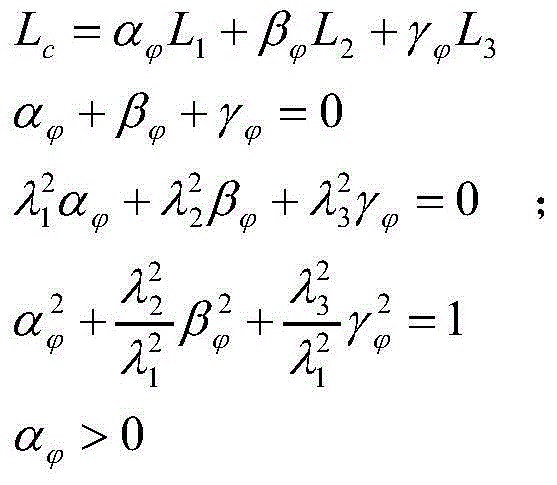Noise assessment method for zero-difference observation value of Beidou receiver
A non-difference observation and value noise technology, which is applied in the field of Beidou receiver non-difference observation value noise evaluation, which can solve the problems of inaccurate reflection of noise level, multi-path error integration, and complex filtering process.
- Summary
- Abstract
- Description
- Claims
- Application Information
AI Technical Summary
Problems solved by technology
Method used
Image
Examples
Embodiment Construction
[0031] Concrete implementation steps of the present invention are as follows:
[0032] 1) Read the observation data of the Beidou satellite navigation system in the RINEX observation value file, and obtain the carrier phase and pseudorange observation values of the three frequencies B1, B2, and B3. According to the characteristics of ionospheric scattering, when only the first-order ionospheric error is considered, the carrier phase and pseudorange observation equations of Beidou satellite navigation system can be expressed as the following form:
[0033]
[0034] Among them, the subscript i represents the frequency identification, respectively represents B1, B2, B3, and the corresponding values are 1, 2, 3; L i is the carrier phase observation value on the i-th frequency, in meters; λ i is the carrier wavelength of the i-th frequency; is the carrier phase observation value of the i-th frequency, in weeks; ρ is the distance from the satellite to the receiver, in mete...
PUM
 Login to View More
Login to View More Abstract
Description
Claims
Application Information
 Login to View More
Login to View More - R&D
- Intellectual Property
- Life Sciences
- Materials
- Tech Scout
- Unparalleled Data Quality
- Higher Quality Content
- 60% Fewer Hallucinations
Browse by: Latest US Patents, China's latest patents, Technical Efficacy Thesaurus, Application Domain, Technology Topic, Popular Technical Reports.
© 2025 PatSnap. All rights reserved.Legal|Privacy policy|Modern Slavery Act Transparency Statement|Sitemap|About US| Contact US: help@patsnap.com



